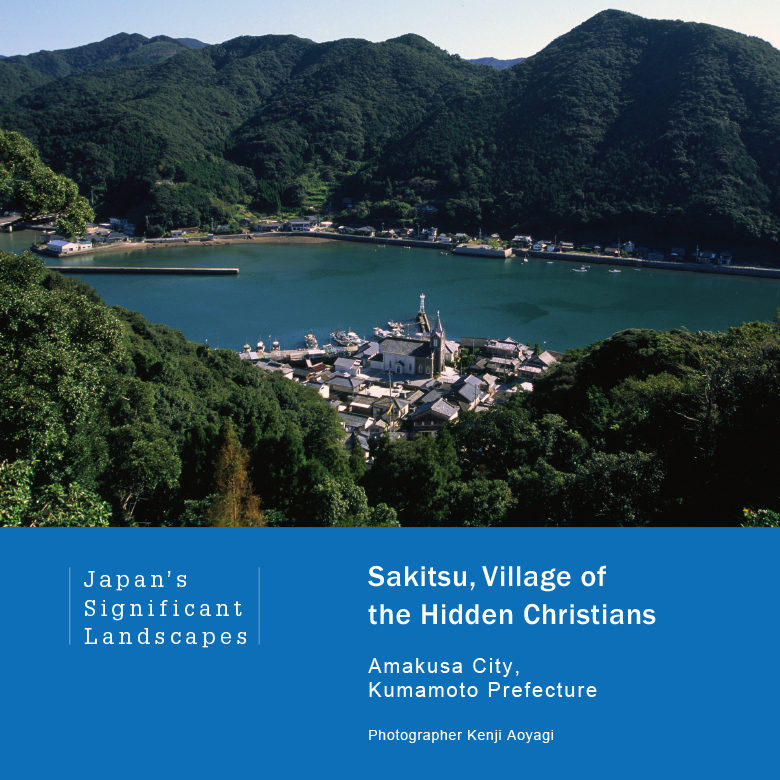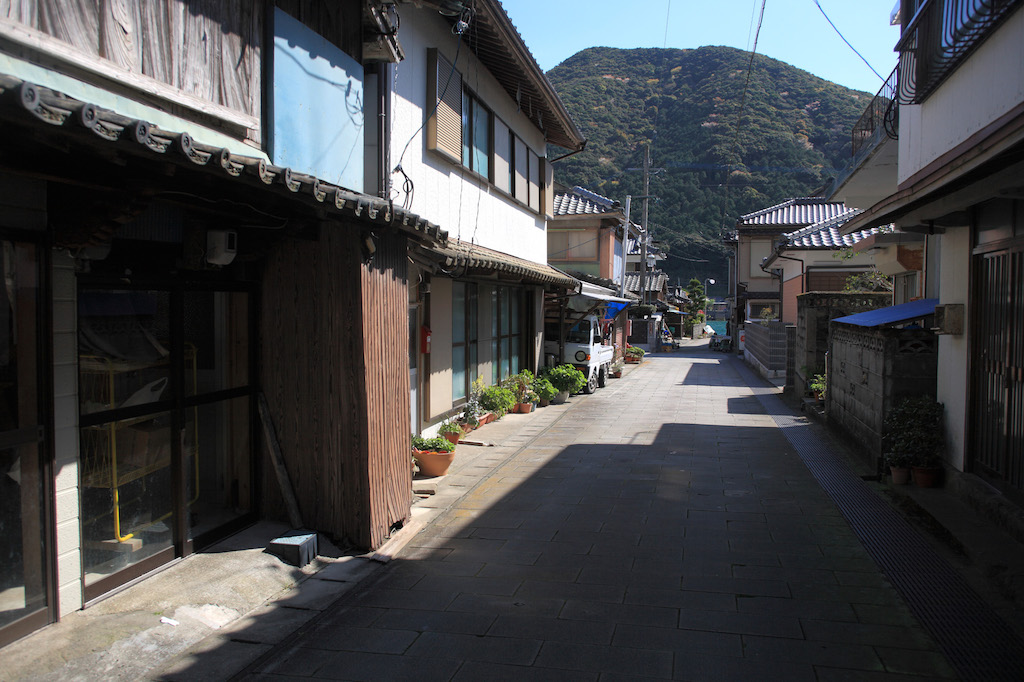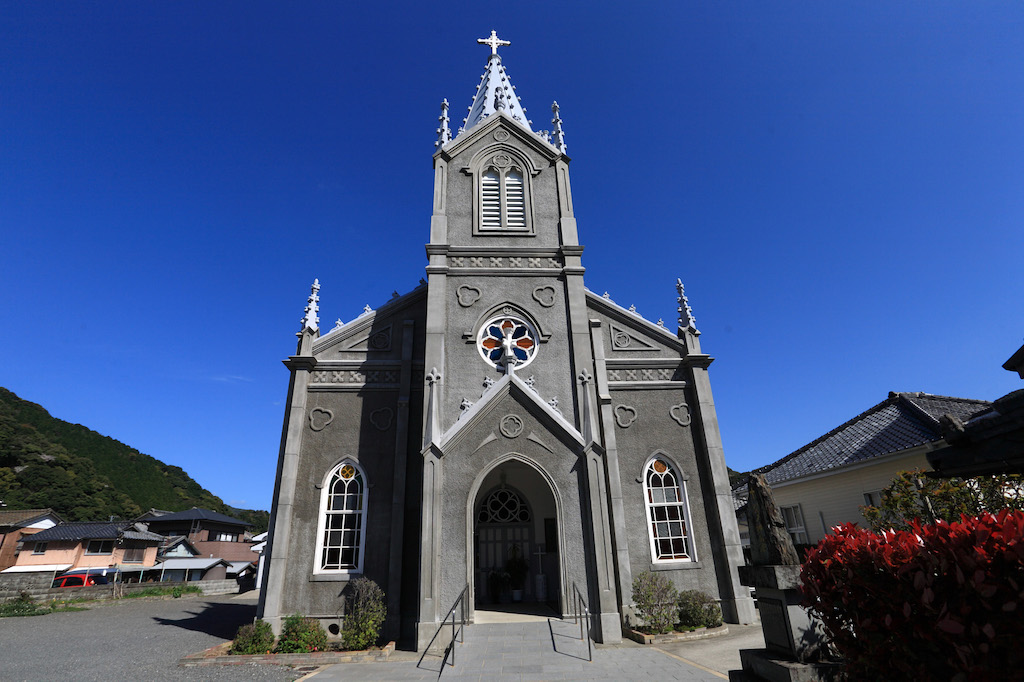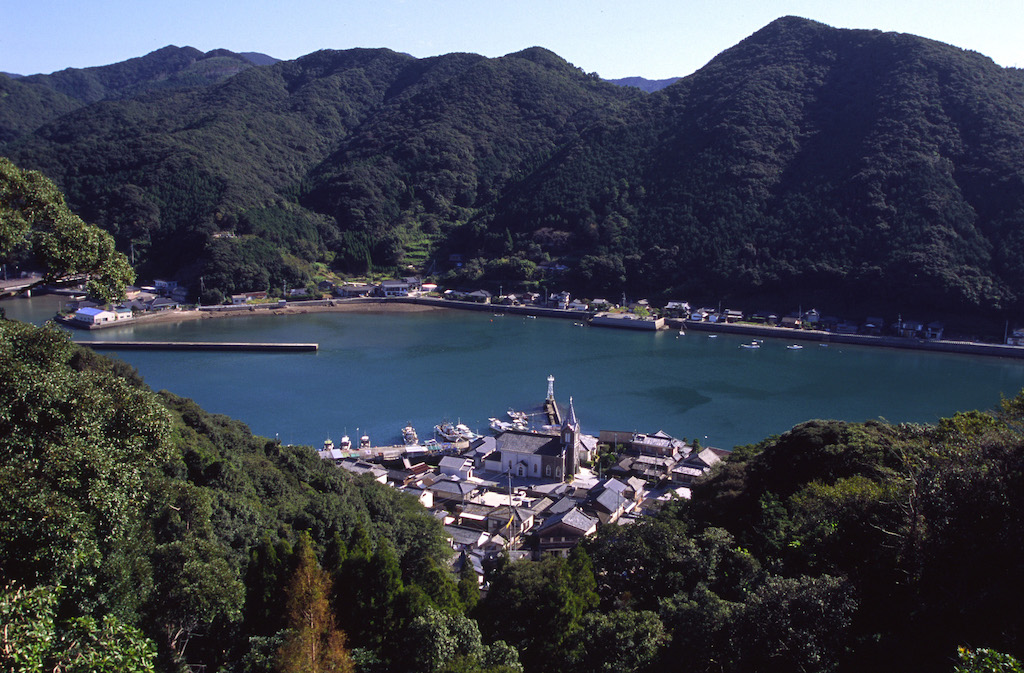

Japan’s unique landscape is filled with breath-taking beauty and vistas that inspire and delight. In this series, photographer Kenji Aoyagi brings us significant landscapes, rich with history and worthy of preservation. The time we head to the hamlet of Sakitsu, “Village of the Hidden Christians”, listed in 2018 as a UNESCO World Heritage Site.
Text and Photos : 青柳健二 Kenji Aoyagi / English Version : Judy Evans
Keyword : History / Sakitsu Village / Kumamoto Prefecture / Japan's Significant Landscapes Series / Christianity in Japan
An Enduring Christian Faith Kept Hidden for 240 Years
We’re heading to the village of Sakitsu, on the western side of Kumamoto Prefecture’s Shimoshima Island. The island is connected to the Kyūshū mainland by Route 266, which passes through the middle of Shimoshima. Heading south on this expressway, we turn onto Route 389 at Kawauramachi-Shirakikawachi. After continuing west for around eight kilometres, we emerge from a tunnel to the scent of the salty sea air. Across the bay on our left, appearing to float above the calm waters of Yōkaku Bay, we see Sakitsu Tenshudō, Sakitsu Village’s Roman Catholic church. It’s easy to see why the church is affectionately referred to as Umi no Tenshudō, or the Church on the Sea.

Sakitsu, a tiny harbour village with a historical church, sits on a narrow strip of land at the base of the steep Konpira-yama, on the sheltered eastern side of the cape.
Christianity came to Sakitsu in 1569 with the arrival of Portuguese Jesuit missionary and surgeon, Luis de Almeida. A church and mission house were built in the village, and a small Christian confraternity established to support the church. Sakitsu became the centre for missionary work in the Amakusa area, later coming under the control of Christian Daimyō (feudal lord) Konishi Yukinaga.
Between 1591 and 1597, missionaries established the Collegio, a school for boys in the neighbouring village of Kawachiura (now called Kawaura). The four young men sent to Rome on the Tenshō Embassy mission sponsored by the Christian Daimyō, Ōtomo Sōrin, Ōmura Sumitada and Arima Harunobu, are thought to have attended the Collegio.
An edict banning Catholicism was issued by the Tokugawa Shogunate in 1614 and persecution of Christians intensified in 1638, after the Shimabara Rebellion. Christianity went underground and, despite the danger, the Hidden Christians of Sakitsu practised their faith in secret for the next 240 years.
The Stately Gothic-style Sakitsu Tenshudō Church
Modern-day Sakitsu is a charming harbour-side hamlet of closely packed houses linked by narrow alleyways called tōya. Large deck-like structures built out over the water are used by fisher folk to dry their fish. Presiding over this traditional Japanese village scene is the centrally-placed Sakitsu Tenshudō Church, with its lofty steeple.

Sakitsu Tenshudō Church was designed by Nagasaki architect, Yosuke Tetsugawa, known for his Gothic-style church architecture. Built in 1934 to replace an older church building that had become rundown, Sakitsu Tenshudō was constructed at the behest of French priest and missionary, Father Halbout.
The stately Gothic-style church building features a 22-metre-high steeple, topped with a cross. The stucco walls of the interior reflect the light inside, making the interior rather bright. Unusually for a church though, the floor inside the building is covered with tatami mats, giving the space an unmistakeable Japanese air.
Father Halbout chose the site of the home of the Yoshida family, former heads of the village, as the location of the new church. This is one of the places where the Japanese Christian converts of old had been persecuted, Christian men and women brutally tortured and slaughtered, many of them with their babies and children in their arms. The altar is placed directly over the spot where they were once forced to trample on fumi-e, tablets bearing Christian images.

The Island Setting for the Film, Silence
Martin Scorsese’s 2016 film, Silence, based on the 1966 novel by Shūsaku Endō depicting the suppression of Christianity in Japan, opens with the scene of a Portuguese Jesuit priest at the volcanic “hell” of Mt Unzen, witnessing the boiling water torture of Japanese Christian converts. Refusing to renounce their faith, they are finally tortured to death.
Fearful of torture, the character Kichijirō, who guides the priests to the island where the Hidden Christians live, betrays his family and his faith, and the priests he set out to help. He renounces Christianity any number of times, trampling on the fumi-ewithout hesitation. Yet, faith is a matter of the heart, and Kichijirō’s torment is internal. Driven to drink and repeatedly seeking forgiveness, he is unable to truly renounce his faith. Kichijirō remains a Christian all his life.
Sakitsu Village and its lovely church now lie in tranquil repose on the island of Shimoshima, suspended between mountains and sea, far-removed from the hustle and bustle of Japanese city life. It’s impossible now to comprehend the bloody scenes and wretched events that took place here, sickeningly depicted in Endō’s novel and Scorsese’s film.
Becoming a World Heritage Site
The hamlet of Sakitsu has been recognised a number of times for its beautiful scenery. It was included in the 1996 Japan’s One Hundred Most Beautiful Seasideslist, and was designated an Important Cultural Landscape in 2011. In 2018, as part of the Hidden Christian Sites in the Nagasaki Regionlisting, Sakitsu was designated a UNESCO World Heritage Site. This world heritage listing is a serial property comprising twelve components that include a cathedral dating from between the 17th and 19th centuries, the remains of a castle, and ten villages, one of which is Sakitsu.

On the hill behind the village is Chaperu no Kane Tenbō Kōen (Chapel Bell View Park), accessed by steps from behind Sakitsu Suwa Shrine. Well worth the long climb, the park offers a panoramic view of Sakitsu Village, and its harbour and church, and has been included in yet another list, Japan’s Top One Hunderd Fragrant Landscapes. The scent of the fresh sea air can be discerned all the way up at the park.
I had the park all to myself and as I sat there resting, savouring the stillness, a boat motored into the harbour below. Somehow the hills surrounding the harbour seemed to amplify the sound of the engine, which floated on the air with extraordinary clarity.
On my way back down to the village, I was stopped in my tracks as I neared the bottom of the stairs by the sight of the steeple of the distant Tenshudō church soaring above the toriigate of Sakitsu Suwa Shrine below me. In 1805 when the government arrested the suspected Hidden Christians of Sakitsu, the villagers were brought here to the shrine grounds, where they were forced to discard the sea shells they had used as votive objects in place of conventional religious imagery.
Sakitsu Village, Amakusa
Kawaura-machi, Amakusa City, Kumamoto Prefecture








